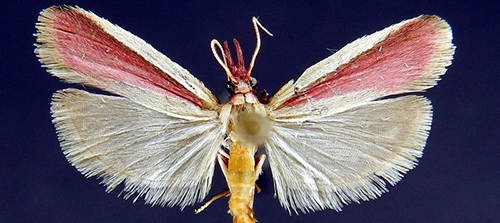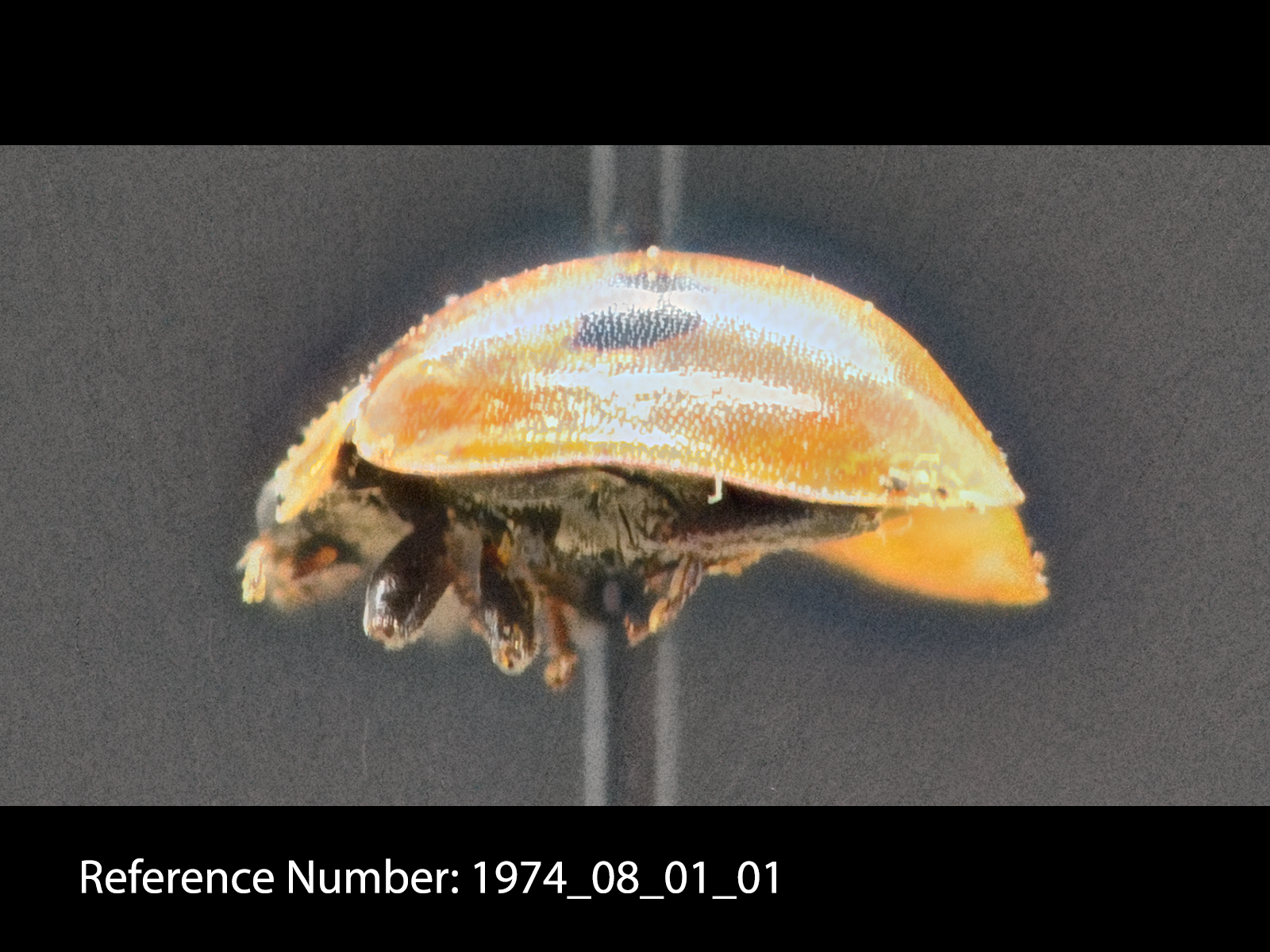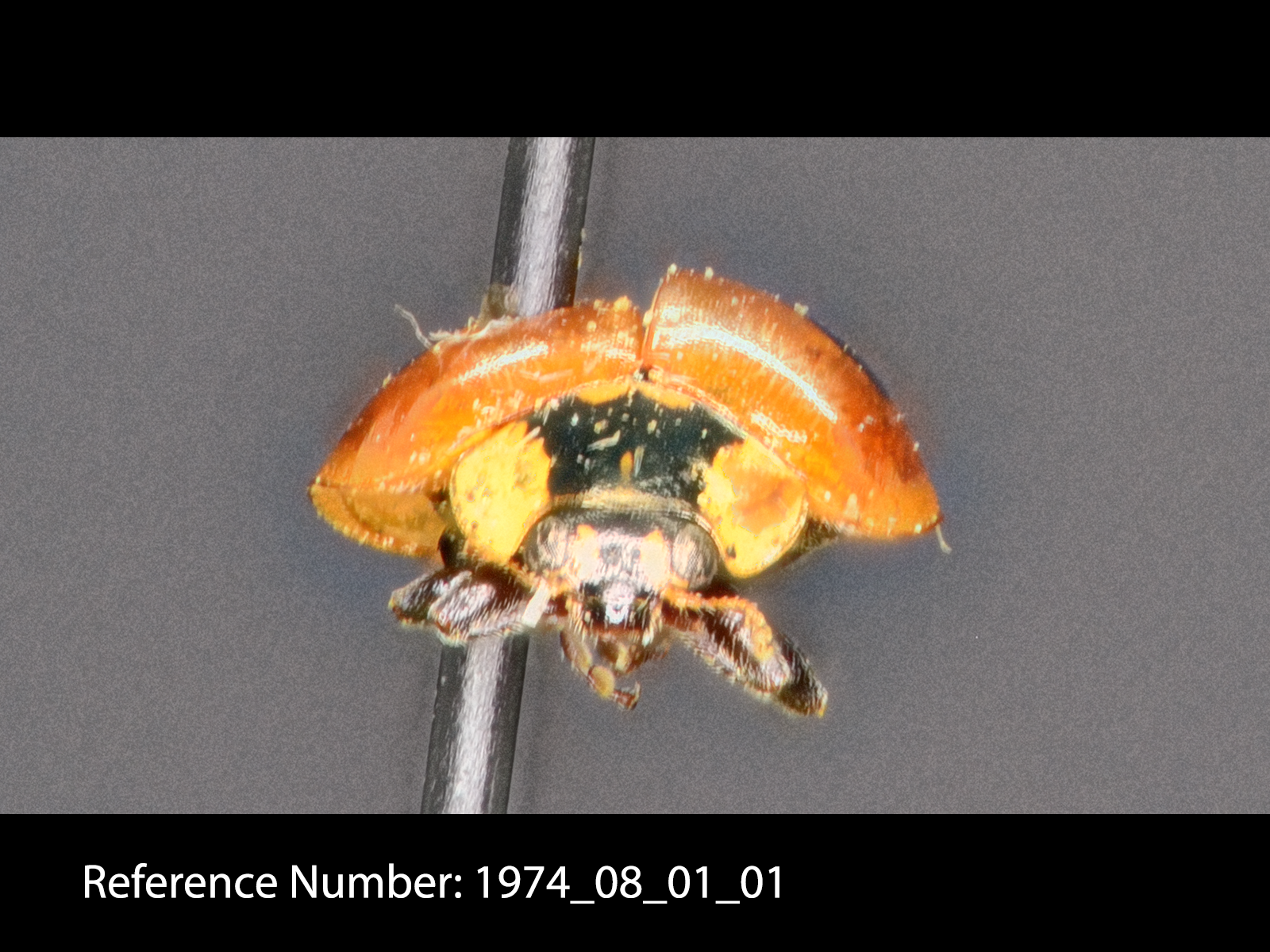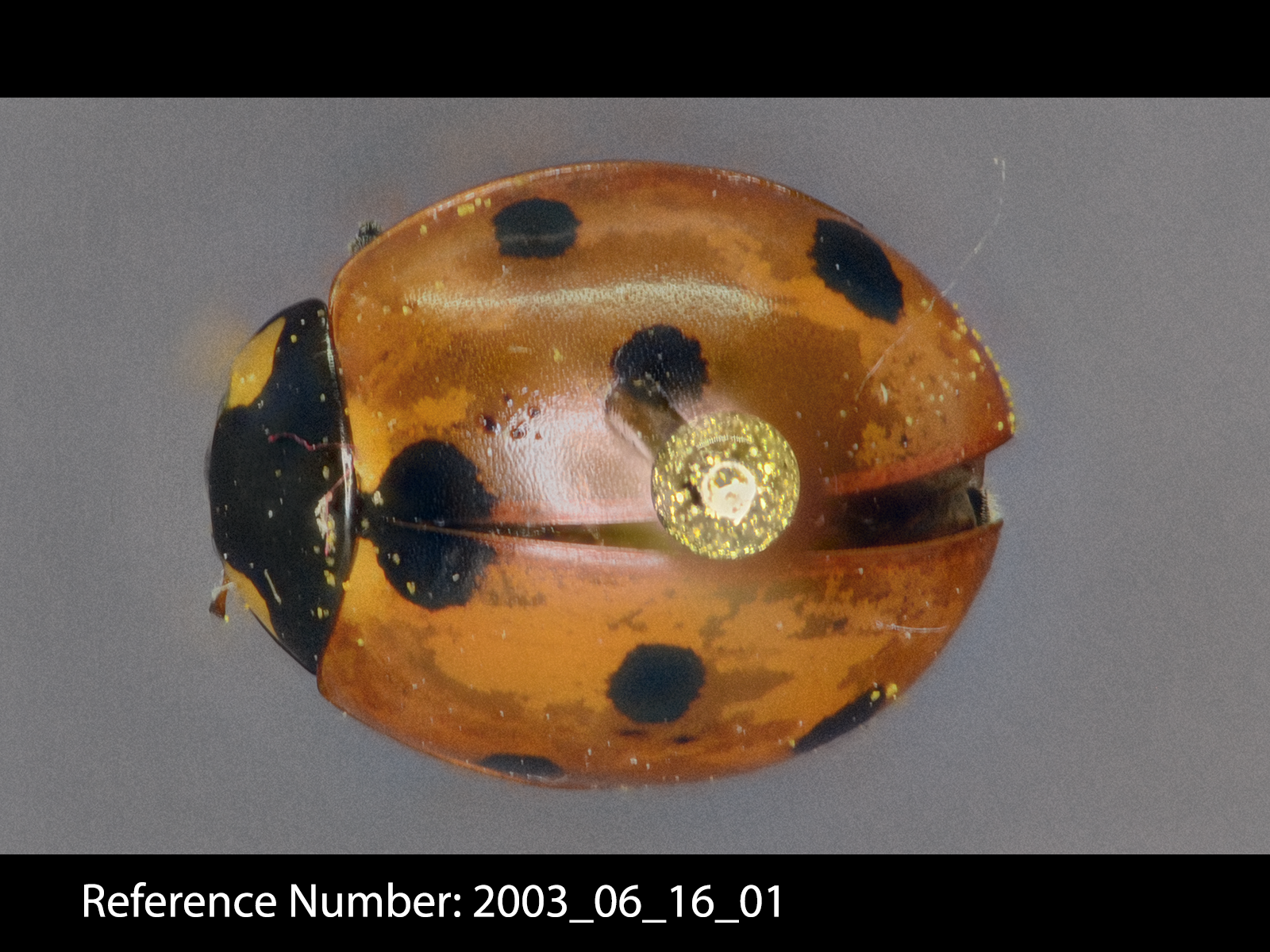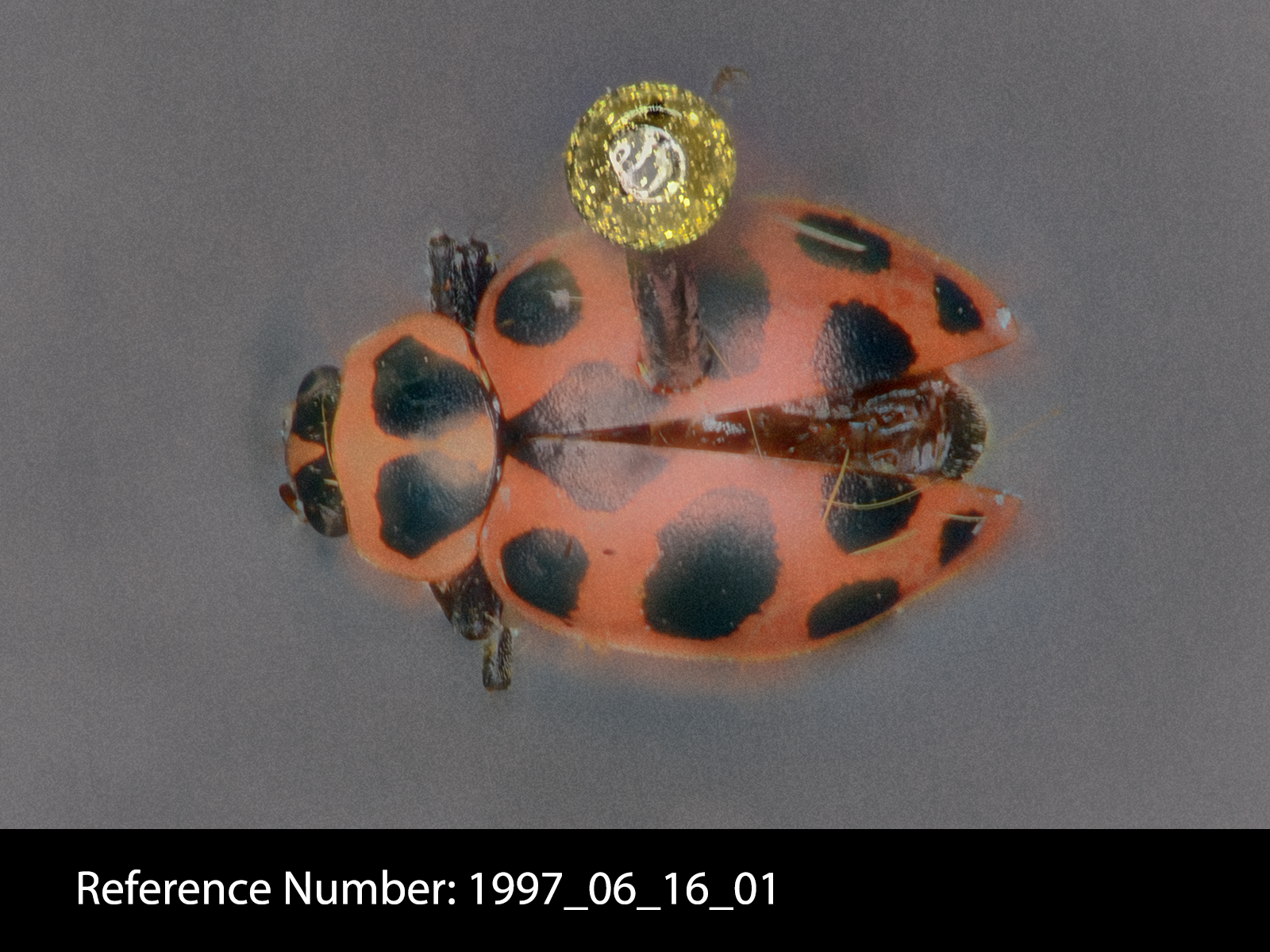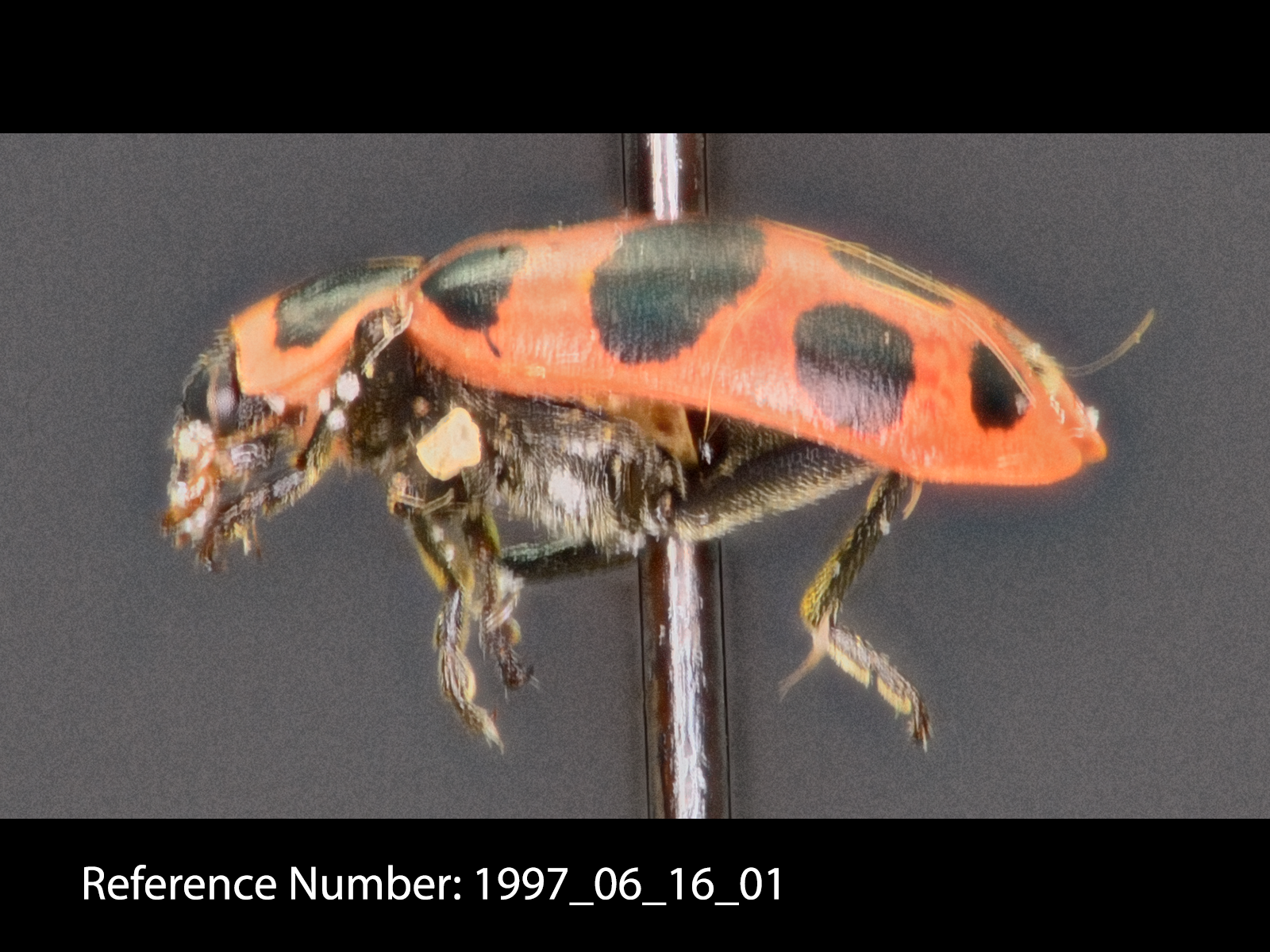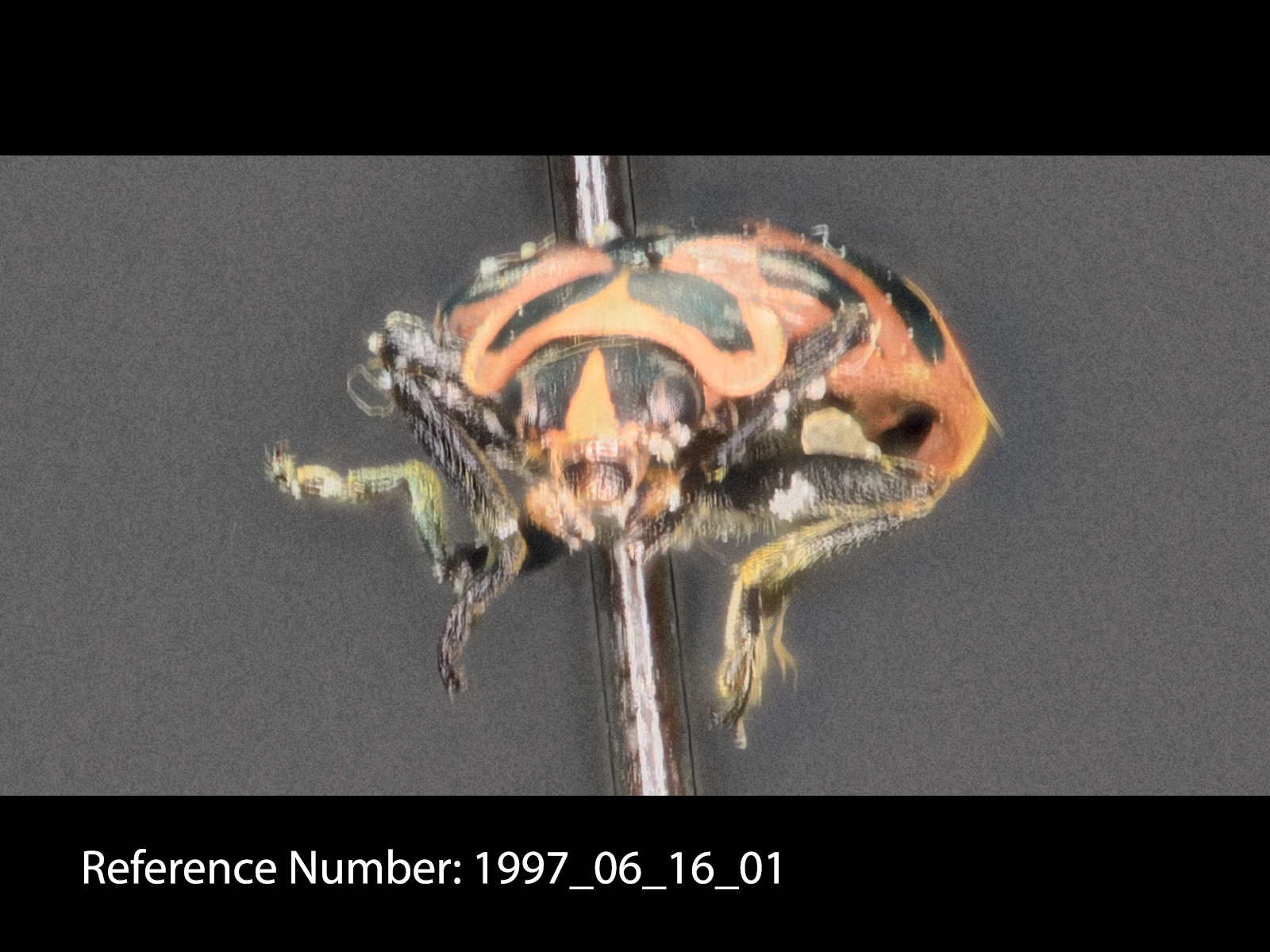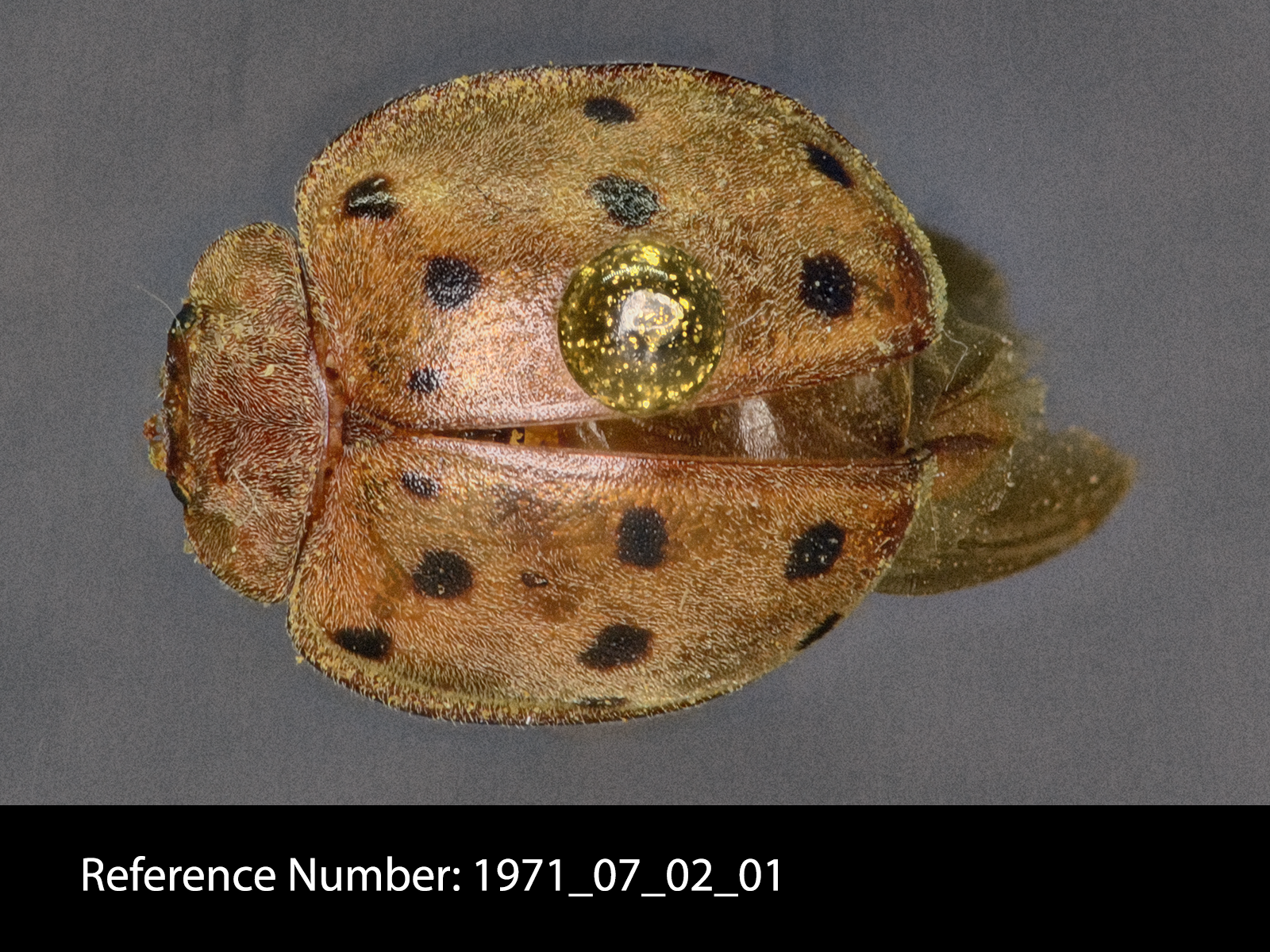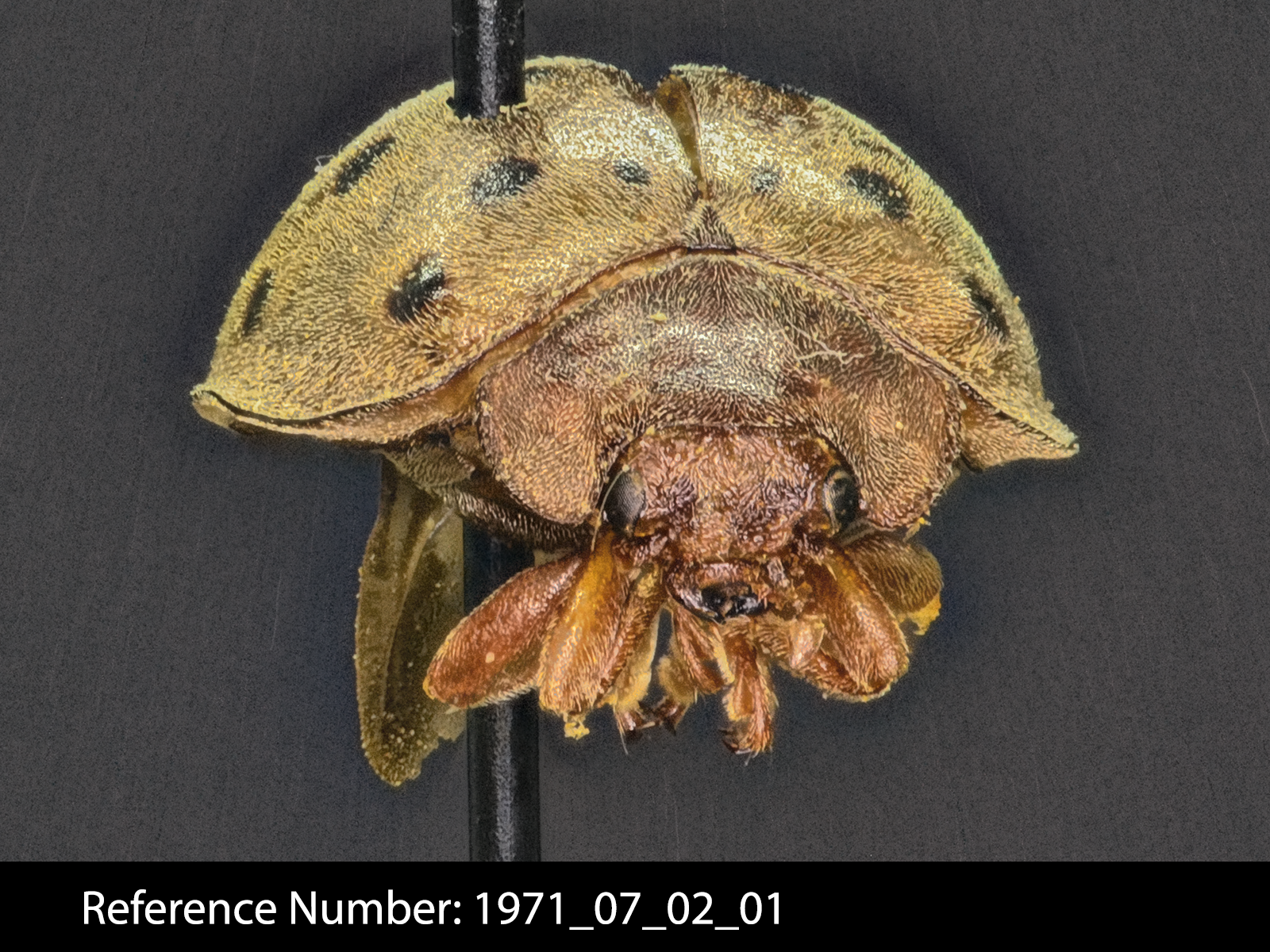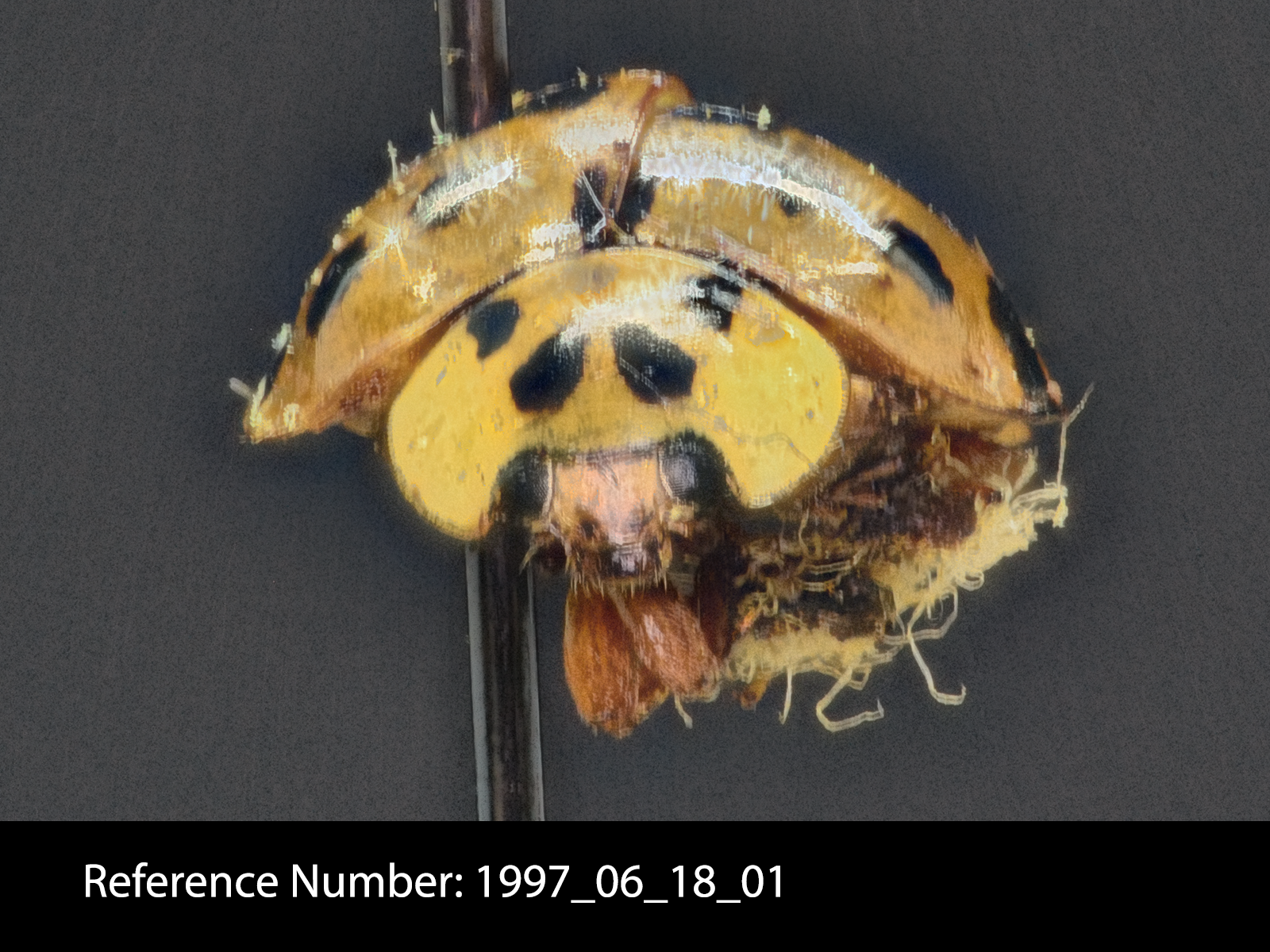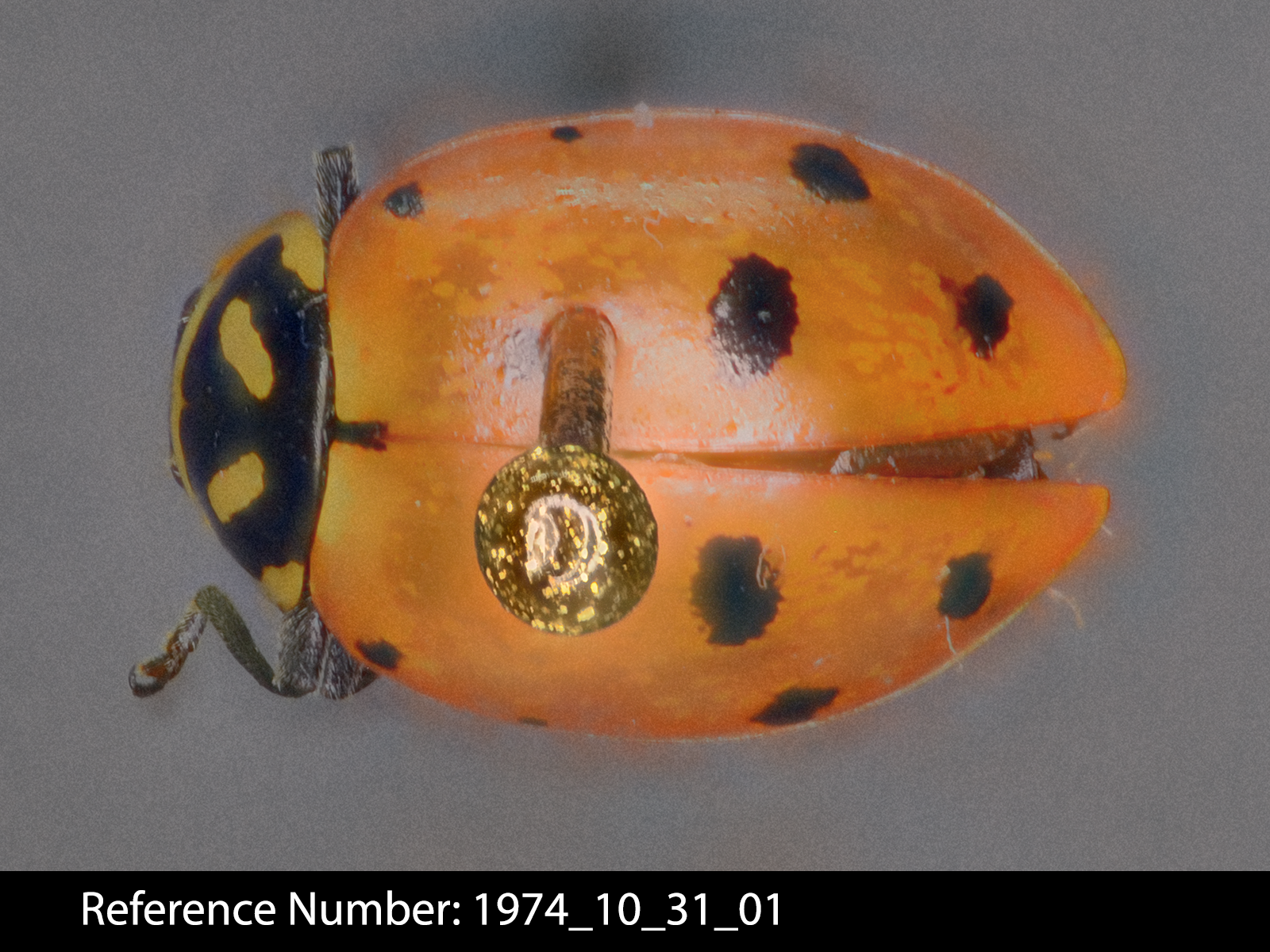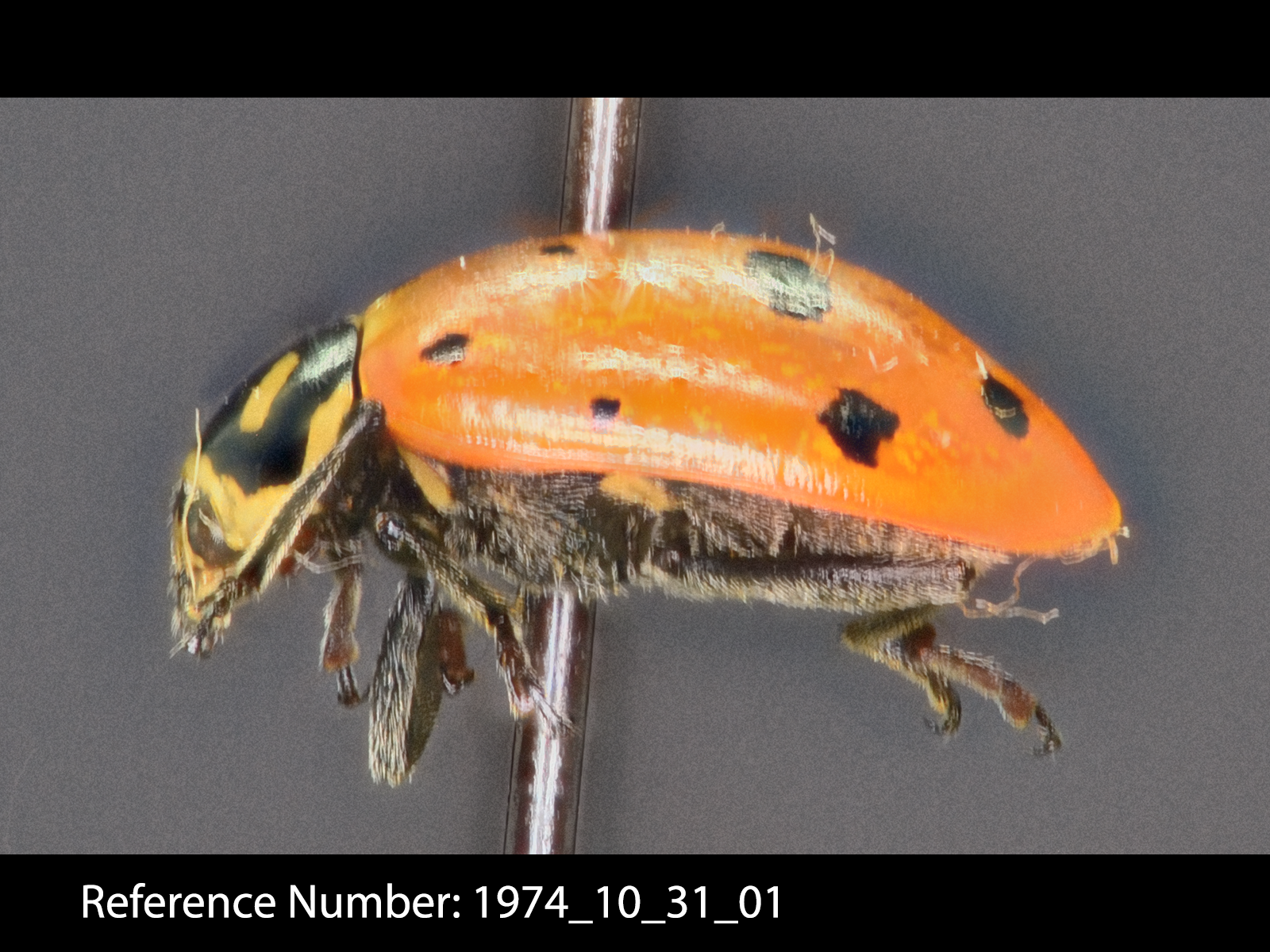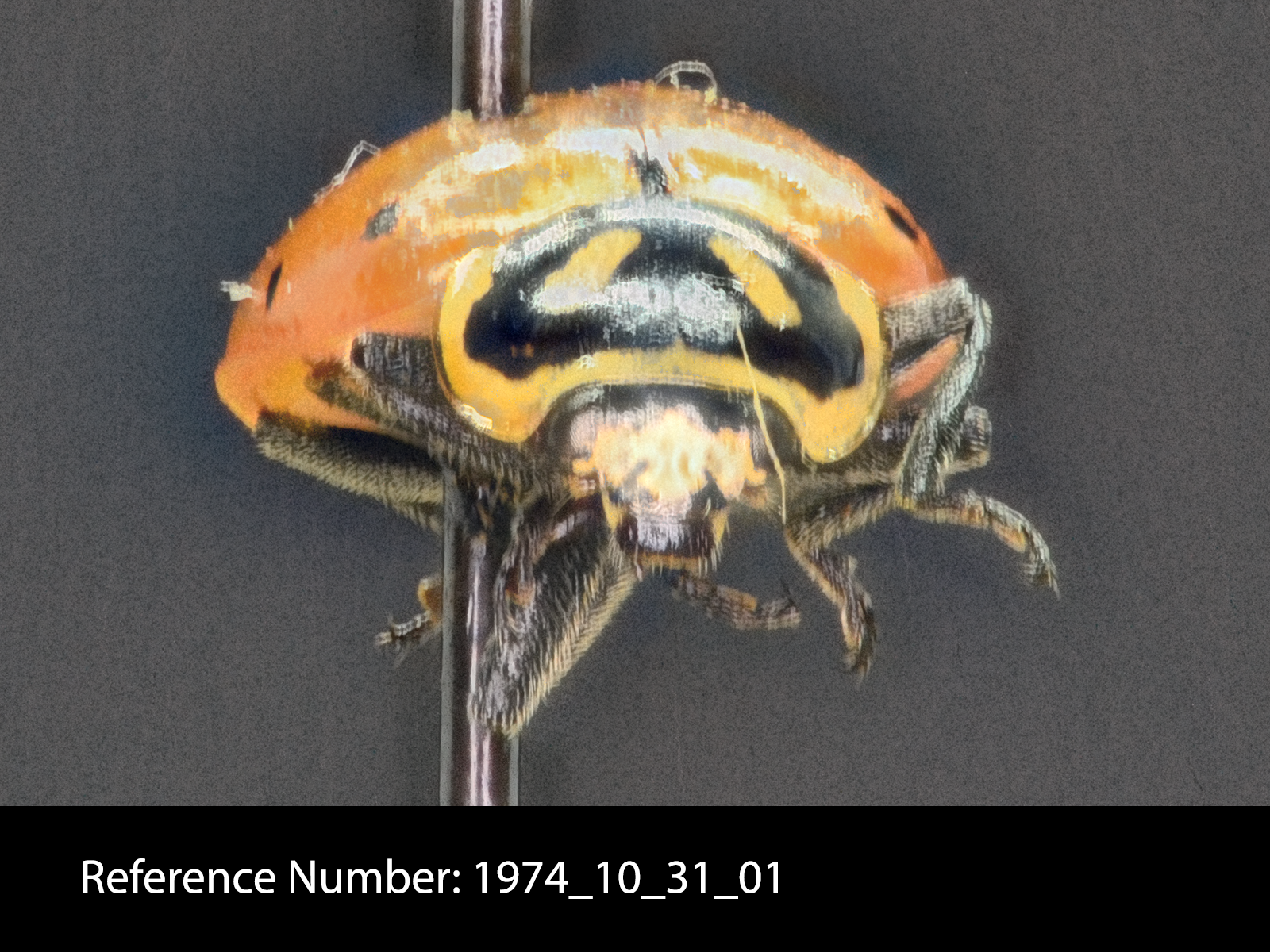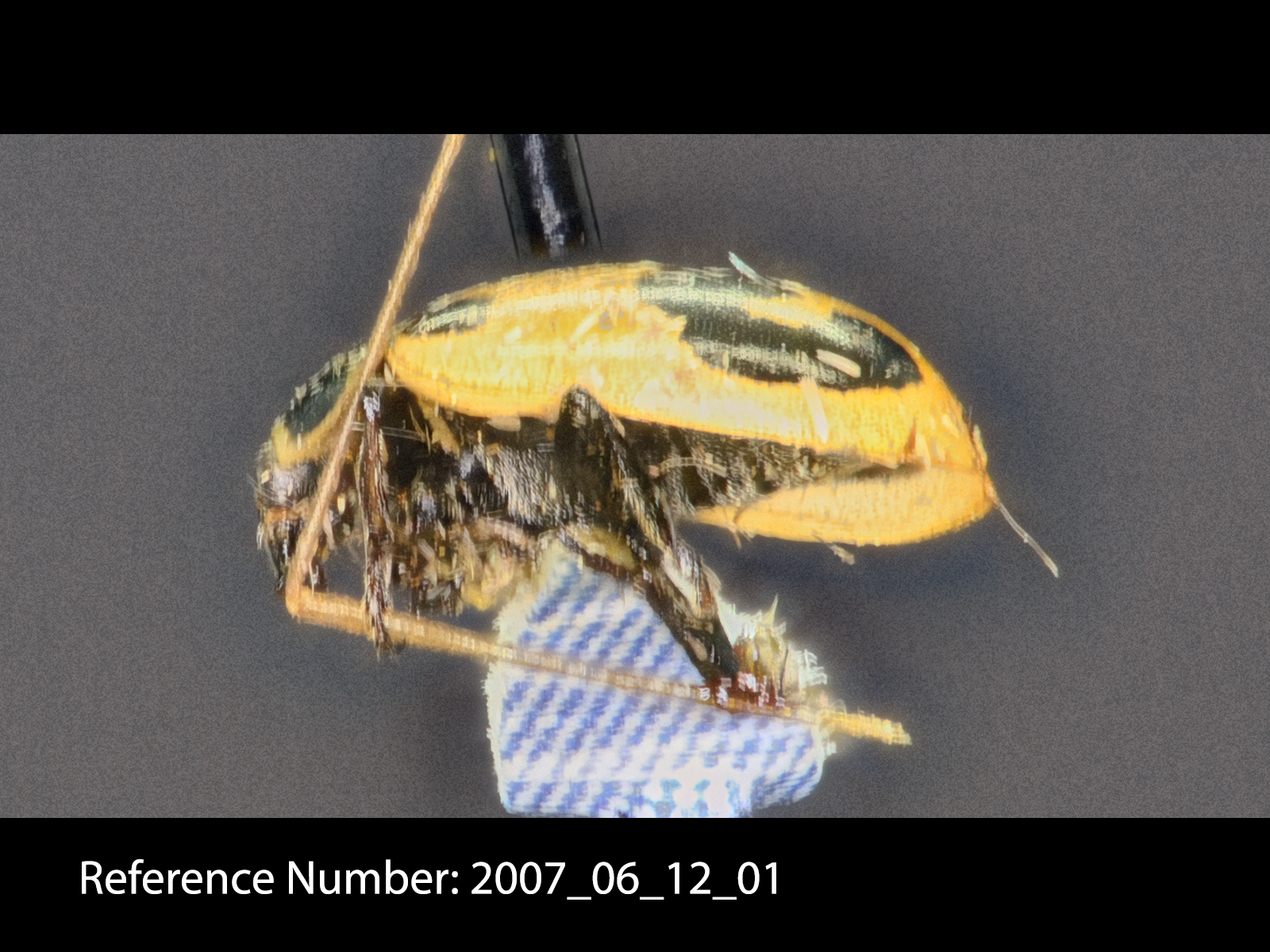COLEOPTERA: Coccinellidae
These beetles are commonly called ladybugs (in North America). They are called ladybirds in the UK. Alternate common names include ladybird beetles or lady beetles. Both larvae and adults often feed on aphids and scale insects. Roughly 6,000 species are known worldwide; slightly less than 500 species are known from North America.
Click/ tap on any of the images to view a larger version of the photo. Please respect that all these photos are copyrighted. Do not use them for any purpose without first contacting us (there is a contact form on our main page for this site).
Adalia bipunctata (Linnaeus, 1758). This species is known as the two-spotted ladybeetle. It is a native North America species (and is also known from western and central Europe [Holarctic distribution]), but populations in North America have declined significantly in recent years. Both adults and larvae feed on aphids. This specimen was collected by Mark DuBois in Tazewell Co., Illinois.
Coccinella septempunctata (Linnaeus, 1758). This is the most common species of Coccinellidae in Europe. It has been repeatedly introduced into North America and is relatively common in Illinois. Curiously, 5 states have adopted this species as their official state insect (although it is not a native species). Adults overwinter in leaf litter or under bark. This specimen was collected by Mark DuBois in Marshall Co., Illinois.
Coleomegilla maculata lengi Timberlake, 1943. This subspecies (and its parent species) is commonly called the spotted lady beetle (or pink spotted lady beetle). It is sometimes called the 12 spotted lady beetle. Both adults and larvae feed on aphids. There may be multiple generations per year. Adults over winter in leaf litter or under stones. This specimen was collected by Mark DuBois in Marshall Co., Illinois.
Cycloneda munda (Say, 1835). This species is known as the polished ladybeetle. It is known from eastern North America (including Illinois). Both adults and larvae feed on aphids and mites. This specimen was collected by Mark DuBois in Tazewell Co., Illinois. Yes, I collected this over 50 years ago.
Epilachna varivestis Mulsant, 1850. This species is known as the Mexican bean beetle. It is an agricultural pest (one of the few species that feeds on plants instead of insects). It is a native North America species, found throughout the eastern United States (including Illinois). This specimen was collected by Mark DuBois in Tazewell Co., Illinois.
Harmonia axyridis (Pallas, 1773). This species is known as the harlequin (or Asian) ladybeetle. It has been artificially introduced into North America to control aphids. This species is incredibly common throughout Illinois (and is often considered a pest when it invades homes in late autumn to overwinter as adults). This specimen was collected by Mark DuBois in Marshall Co., Illinois.
Hippodamia convergens Guérin-Méneville, 1842. This species is commonly called the convergent lady beetle. [The lines on the prothorax converge.] It is one of the most commonly encountered species of Coccinellidae in North America (and Illinois). Both adults and larvae feed on aphids (with adults eating an estimated 20 aphids per day). This specimen was collected by Mark DuBois in Tazewell Co., Illinois.
Hippodamia parenthesis (Say, 1824). This is another species of lady beetle. [There is no generally accepted common name. However, the species name reflects the parenthesis shaped markings on the elytra. It would seem that parenthesis lady beetle would be an appropriate common name.] This species is somewhat common throughout North America (and Illinois). This specimen was collected by Mark DuBois in Marshall Co., Illinois.
